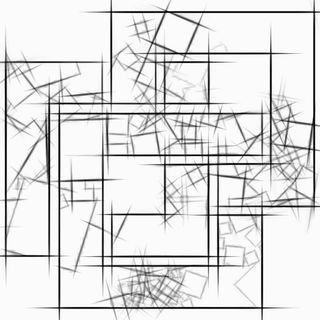Conformity
Can Conformity Be Creative?
Copying others' examples promotes creativity if they challenge your assumptions.
Posted March 22, 2017

If you want to develop your own creative idea for a project, does it help to study how other people have approached the same task? One classic finding, called the conformity effect, shows that looking at other people’s ideas just as you’re trying to develop your own can limit the way you think about the problem. You can end up mimicking those ideas without even realizing it. But a recent study shows that conformity can sometimes be a good thing. Copying previous ideas can actually boost creativity. Let’s see how.
First, a quick look at the conformity effect. In a classic research study, published in Design Studies, David Jansson and Steven Smith asked design engineering students and practicing engineers to generate designs for practical products, such as spill-proof coffee cups. Before coming up with their own ideas, the study participants looked at examples of other designs that had flaws built into them, such as straws and mouthpieces that would leak if the cup tipped over. Even though the flaws were evident and sometimes even directly pointed out, the students and engineers still included them in their own designs. They also tended to produce designs of the same basic type as the examples rather than coming up with original ideas. Throughout the years, the conformity effect has been replicated across many studies (including a couple of my own) with different groups of people and different tasks. And it happens even when we tell people not to copy the examples; they seem to do it inadvertently.
Clearly, seeing examples can limit people’s approaches, but a recent study by Takeshi Okada and Kentaro Ishibashi, published in Cognitive Science, shows that when people (literally) copy examples it can sometimes boost their creativity. The trick is that this only happens when the examples violate people’s basic assumptions or mental frameworks. The researchers capitalized on a cultural constraint in Japan that favors realistic drawings over less realistic ones. Drawings are “supposed to be” realistic. The researchers knew that the undergraduate students who participated in their study would come into the situation adhering to that constraint, and wanted to see if they could get them to relax it.
The study took place over three days. On the first day, the students drew objects found in nature, such as oranges. On day two, students in a Copy condition were shown two abstract drawings and were asked to copy them. The idea was that copying the abstract examples would prod them away from their implicit idea that drawings should be “realistic.” Students in a Control condition were not shown those examples, but instead made two new drawings of their own. On the third day, everybody again made drawings of natural objects. Art experts rated all the drawings, and the Copy group’s day three drawings were rated as more creative than the Control group’s drawings. So, copying the abstract examples increased the creativity of their own drawings.
A really interesting angle on the findings is that the students weren’t just directly imitating the abstract drawings when they did their own on day three. Instead, the examples seemed to have pushed them to develop their own unique styles. This was shown by the fact that their day three drawings were not as much like the examples as drawings done by people who were supposed to imitate the style of the examples for their day three drawings.
There are two additional fine points worth mentioning. One is that students who copied realistic drawings on day two did not show higher day three creativity. To have a positive effect, the examples needed to violate the “realistic” constraint. The second interesting twist is that intense consideration of the abstract examples was as effective as having participants copy them. That is, when students took as much time inspecting the abstract drawings and considering the artist’s intent, their creativity scores went up as much as those who actually physically copied the drawings. So, it may be enough to think deeply about examples that challenge our ideas, even if we don’t actually copy them.
The takeaway message is this: examples don’t always constrain people. In fact, copying examples, or even just studying them carefully, can boost creativity and help people develop their own creative styles. But it has to be the right kinds of examples. To be really helpful, it’s a good idea to work with examples that challenge your basic assumptions.
Copyright © Thomas Ward 2017
References
Jansson, D. G., & Smith, S. M. (1991). Design fixation. Design Studies, 12, 3-11.
Okada, T., & Ishibashi, K. (2016). Imitation, inspiration, and creation: Cognitive process of creative drawing by copying others' artworks. Cognitive Science, doi:10.1111/cogs.12442


